
The San Diego Zoo Safari Park, originally named the San Diego Wild Animal Park until 2010, is an 1,800 acre zoo in the San Pasqual Valley area of San Diego, California, near Escondido. It is one of the largest tourist attractions in San Diego County. The park houses a large array of wild and endangered animals including species from the continents of Africa, Asia, Europe, North and South America, and Australia. The park is in a semi-arid environment, and one of its most notable features is the Africa Tram, which explores the expansive African exhibits. These free-range enclosures house such animals as antelopes, giraffes, buffalo, cranes, and rhinoceros. The park is also noted for its California condor breeding program, the most successful such program in the United States.

London Zoo is the world's oldest scientific zoo. It was opened in London on 27 April 1828, and was originally intended to be used as a collection for scientific study. In 1831 or 1832, the animals of the Tower of London menagerie were transferred to the zoo's collection. It was opened to the public in 1847. Today, it houses a collection of 673 species of animals, with 19,289 individuals, making it one of the largest collections in the United Kingdom. The zoo is sometimes called Regent's Zoo.

The Cincinnati Zoo & Botanical Garden is the sixth-oldest zoo in the United States, opening in 1873, after the Roger Williams Park Zoo (1872). It is located in the Avondale neighborhood of Cincinnati, Ohio. It originally began with 64.5 acres in the middle of the city, but has spread into the neighboring blocks and several reserves in Cincinnati's outer suburbs. It was appointed as a National Historic Landmark in 1987.

Bristol Zoo is a zoo in the city of Bristol in South West England. The zoo's stated mission is to "maintain and defend” biodiversity through breeding endangered species, conserving threatened species and habitats and promoting a wider understanding of the natural world".
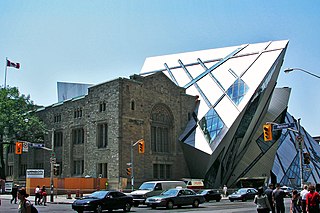
The Royal Ontario Museum is a museum of art, world culture and natural history in Toronto, Ontario, Canada. It is one of the largest museums in North America and the largest in Canada. It attracts more than one million visitors every year, making the ROM the most-visited museum in Canada. The museum is north of Queen's Park, in the University of Toronto district, with its main entrance on Bloor Street West. Museum subway station is named after the ROM and, since a 2008 renovation, is decorated to resemble the institution's collection.

ZSL Whipsnade Zoo, formerly known as Whipsnade Wild Animal Park, is a zoo and safari park located at Whipsnade, near Dunstable in Bedfordshire, England. It is one of two zoos that are owned by the Zoological Society of London (ZSL), a charity devoted to the worldwide conservation of animals and their habitats.

African Lion Safari is a family-owned safari park in Southern Ontario, Canada, straddling the cities of Hamilton and Cambridge, located 100 kilometres (62 mi) west of Toronto. Guests may tour seven game reserves, with a total area of about 740 acres, on tour buses or in visitors' own vehicles, where animals roam freely in contained areas. Accompanying the game reserves is a walking section where exotic birds and primates, as well as the park's herd of Asian elephants, are on display.
Montgomery Zoo is a 40-acre (16 ha) zoo located on the north side of Montgomery, Alabama. The zoo is an independent city department, and is aided by The Montgomery Area Zoolocal Society. It is home to approximately 750 animals representing 140 species. It is an accredited member of the Zoological Association of America and participates in twenty-one Species Survival Plans. In 1991, the zoo was home to the first African elephant birth in Alabama. In 2013, the first Indian rhinoceros ever conceived by artificial insemination was born at the zoo. The Mann Wildlife Learning Museum opened in January 2003. The museum features taxidermy displays with a focus on native wildlife, game species, and management.
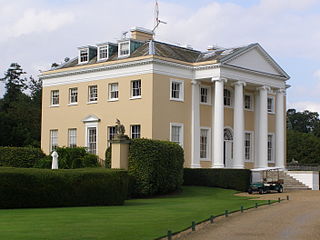
Howletts Wild Animal Park was set up as a private zoo in 1957 by John Aspinall near Canterbury, Kent. In 1962 the House known as Howletts was being restored. A small cottage was inhabited by an employee. The animal collection was opened to the public in 1975. To give more room for the animals another estate at Port Lympne near Hythe, Kent was purchased in 1973, and opened to the public as Port Lympne Zoo in 1976.
Port Lympne Hotel & Reserve near the town of Hythe in Kent, England is set in 600 acres (2.4 km2) and incorporates the historic Port Lympne Mansion, and landscaped gardens designed by architect Sir Herbert Baker, for Sir Philip Sassoon.

Wilhelma (help·info) is a zoological-botanical garden in Stuttgart in the Bad Cannstatt district in the north of the city on the grounds of a historic castle. Wilhelma Zoo is one of the most popular tourist destinations in Baden-Württemberg, seeing more than 2 million visitors annually.

The Zoological Center Tel Aviv-Ramat Gan in the Tel Aviv District city of Ramat Gan, Israel is the largest collection of wildlife in human care in the Middle East. The 250-acre site consists of both a drive-through African safari area and a modern outdoor zoo. The African animal park opened to the general public in 1974. In 1981, the zoo was established in the middle of the park to replace the Tel Aviv Zoo, which had closed down.

The northern white rhinoceros, or northern square-lipped rhinoceros, is one of two subspecies of the white rhinoceros. Formerly found in several countries in East and Central Africa south of the Sahara, this subspecies is a grazer in grasslands and savanna woodlands. Since 19 March 2018, there are only two known rhinos of this subspecies left, called Najin and Fatu, both of which are female; barring the existence of unknown or misclassified male northern white rhinos elsewhere in Africa, this makes the subspecies functionally extinct. The two female rhinos belong to the Dvůr Králové Zoo in the Czech Republic but live in the Ol Pejeta Conservancy in Kenya and are protected round-the-clock by armed guards.

Woburn Safari Park is a safari park located in Woburn, Bedfordshire, England. Visitors to the park can drive through exhibits, which contain species such as southern white rhino, elephants, tigers and black bears. It is part of the estates of the Duke of Bedford that also includes Woburn Abbey and its 3,000-acre (1,200 ha) deer park. The Safari Park itself covers 360 acres (150 ha).

Blair Drummond Safari Park is a family visitor attraction located near Stirling in Scotland. It opened to the public on 15 May 1970 and is home to over 350 animals, many of which roam freely or are kept in large enclosures in the 120-acre (49 ha) estate. The Safari Park is open from mid March until the end of October each year. The park is one of Scotland's busiest tourist attractions.
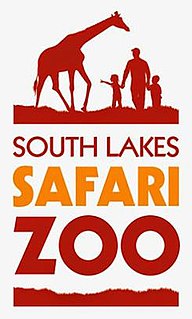
South Lakes Safari Zoo is a 51-acre (21 ha) zoo established in 1994 by David Gill, and located in Cumbria, England. Its name refers to its proximity to the Lake District, though it lies entirely within the Borough of Barrow-in-Furness on the outskirts of Dalton.
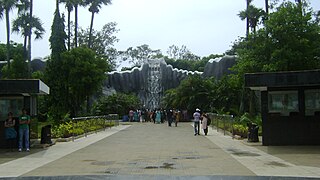
Arignar Anna Zoological Park, also known as the Vandalur Zoo, is a zoological garden located in Vandalur, is in the southwestern part of Chennai, Tamil Nadu, about 31 kilometres (19 mi) from the Chennai Central and 15 kilometres (9.3 mi) from Chennai Airport. Established in 1855, it is the first public zoo in India. It is affiliated with the Central Zoo Authority of India. Spread over an area of 602 hectares, including a 92.45-hectare (228.4-acre) rescue and rehabilitation centre, the park is the largest zoological park in India. The zoo houses 2,553 species of flora and fauna across 1,265 acres (512 ha). As of 2012 the park houses around 1,500 wild species, including 46 endangered species, in its 160 enclosures. As of 2010, there were about 47 species of mammals, 63 species of birds, 31 species of reptiles, 5 species of amphibians, 28 species of fishes, and 10 species of insects in the park. The park, with an objective to be a repository of the state's fauna, is credited with being the second wildlife sanctuary in Tamil Nadu after Mudumalai National Park.

Alfred the Gorilla arrived at Bristol Zoo, England, in 1930 and became a popular attraction and animal celebrity. His fame grew to international proportions during World War II and after his death he remained an important mascot for the city of Bristol.
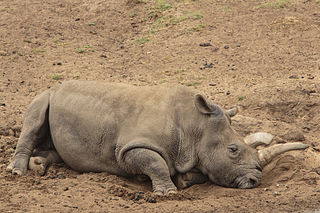
Nola was a northern white rhinoceros who lived at the San Diego Zoo Safari Park near Escondido, California. At her death, she was one of only four of her subspecies overall. She was outlived by male Sudan and females Najin and Fatu.
Thomas Earl Benner, known as Tom Benner, is a Canadian sculptor of large sculptures and installations exploring the environment, history and nature. His work has been widely exhibited in Canada in public galleries and even in unconventional places, such as Union Station in Toronto.

















